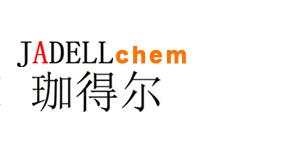Recombinant Mouse Eotaxin/CCL11是嗜酸性粒细胞、嗜碱性粒细胞和Th2淋巴细胞的有效化学诱导剂。
Synonyms
rMuEotaxin/CCL11; C-C motif chemokine 11; Eosinophil chemotactic protein; SCYA11 ; 重组小鼠嗜酸粒细胞趋化因子 (CCL11)
Species
MouseSource
E. coli Accession
P48298 Gene ID
20292 Molecular Weight
Approximately 8.4 kDa AA Sequence
HPGSIPTSCC FIMTSKKIPN TLLKSYKRIT NNRCTLKAIV FKTRLGKEIC ADPKKKWVQD ATKHLDQKLQ TPKP Biological Activity
Full biological activity determined by a chemotaxis bioassay using purified eosinophils is in a concentration range of 100-1000 ng/ml. Appearance
Lyophilized powder. Formulation
Lyophilized after extensive dialysis against PBS, pH 7.4. Endotoxin Level
<1 EU/μg, determined by LAL method. Reconstitution
Reconstitute the lyophilized recombinant Mouse Eotaxin/CCL11 (rMuEotaxin/CCL11) to 0.1-1.0 mg/mL using sterile distilled water or aqueous buffer containing 0.1% BSA. Storage & Stability
Lyophilized recombinant Mouse Eotaxin/CCL11 (rMuEotaxin/CCL11) is stored at -20°C. After reconstitution, it is stable at 4°C for 1 week or -20°C for longer. It is recommended to freeze aliquots at -20°C or -80°C for extended storage. Shipping
Room temperature in continental US; may vary elsewhere. Background
CCL11 is a small cytokine belonging to the CC chemokine family. CCL11 selectively recruits eosinophils by inducing their chemotaxis, and therefore, is implicated in allergicresponses[1]. It is produced by IFN-γ-stimulated endothelial cells and TNF-activated monocytes. CCL11 is a potent chemoattractant for eosinophils, basophils, and Th2 lymphocytes. CCL11 has a number of important biological functions in disease processes. It plays a critical role in allergic and nonallergic inflammatory reactions, such as mycobacterial and schistosomal induced granulomatosis[2]. |



